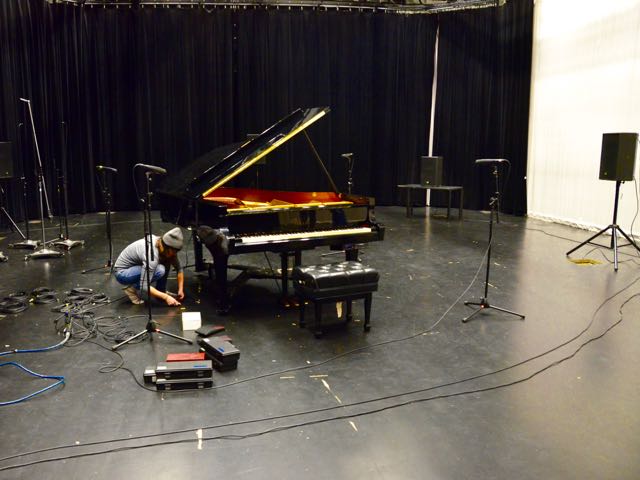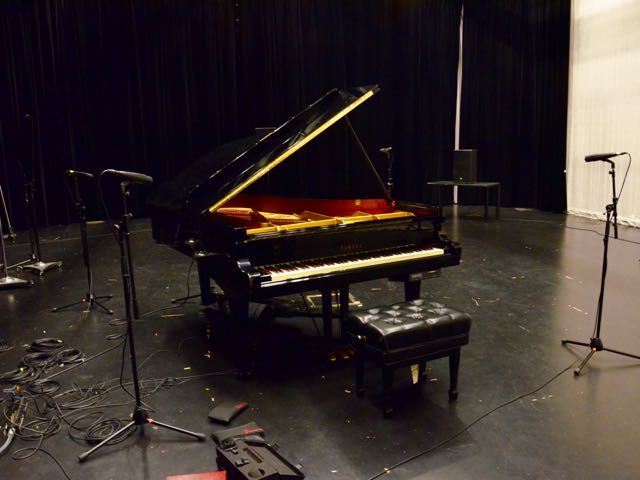Spatial Piano Recording
As an audio engineer, I have been experimenting and working with creating for spatial multichannel environments for awhile. I knew that I wanted to incorporate a spatial audio component into my final production. I went into the Black Box Theater, with Leslie Gaston, to test out some ideas on different miking techniques to be integrated into the final performance. I wanted to explore the relationship of sound between a piano that is physically in the space and one that has been projected around the audience.
The setup process took a little more time then I had hoped. We spent a lot of time trying to figure out the best way to create a workflow in the space. The speakers were not already set up so we had to first place all of them around the space in a circle. We used an 8 channel Presonus Firestudio to interface my computer to all of the speakers. I used a Max MSP patch I had constructed in conjunction with Signal-to-Noise labs to do the spatialization. For recording, we used the ProTools setup that the Black Box had. Since we were monitoring from my computer downstairs, but recording on the ProTools system, which was upstairs, we had to figure out the best way to get the audio files to me for playback.
We explored our options for attempting to network between computers to make the file transferring process a bit smoother. Initially we attempted to setup Dante Virtual controller to send audio over IP but the Black Box computer and Protools rig were too old and wouldn't recognize the install files. We attempted to do a file share over Ethernet between my computer and the Protools computer, but were struggling to make the connection so we finally settled on transferring the files from the Protools computer to another computer in the control room that had Airdrop and allowed us to use that to send files from that computer to mine wirelessly. I was then able to spatialize them and hear what the recordings were sounding like. The whole process was a bit cumbersome and made me desire a space that was built for this kind of experimentation.
Once we had everything set up we dove into exploring some different microphone placements. We were limited to 12 microphones at one time due to the number of XLR cables available. We were also limited in microphone choices, but we made due with what was available to us. To begin we arranged four Sennheiser 421s in a modified Hamasaki Square around the piano. We used two Crown PCC160 boundary microphones on the metal plates that spanned below the piano connecting the legs. Finally, we used a DPA 5100 Mobile 5.1 Surround Sound Microphone placed underneath the piano at the base with the center facing towards the front of the piano. This gave us 12 channels which we recorded to the Black Box's Protools setup.
We only had time to get through one setup, but it still gave me some good ideas for further research. Following the session, I have been experimenting with the spatialization of the microphone setup in my Max patch. I have experimented with different ways of grouping the different channels of the recoding and controlling their motions in the spatial environment. Next time I feel I understand the workflow better and can be more prepared and efficient with time. I would like to be able to do the recording with as many different miking setups at the same time as possible so I can use them in different ways in the final mix. I also have some better ideas about some of the notes and piano expressions that I want to capture, ie) I think it would be good to capture more individual notes and runs.

